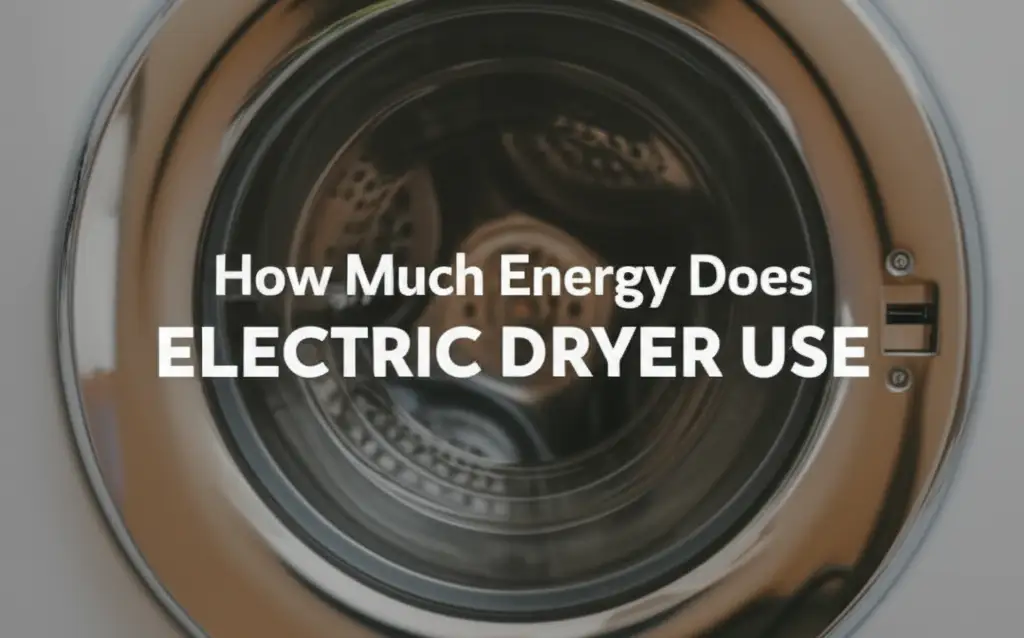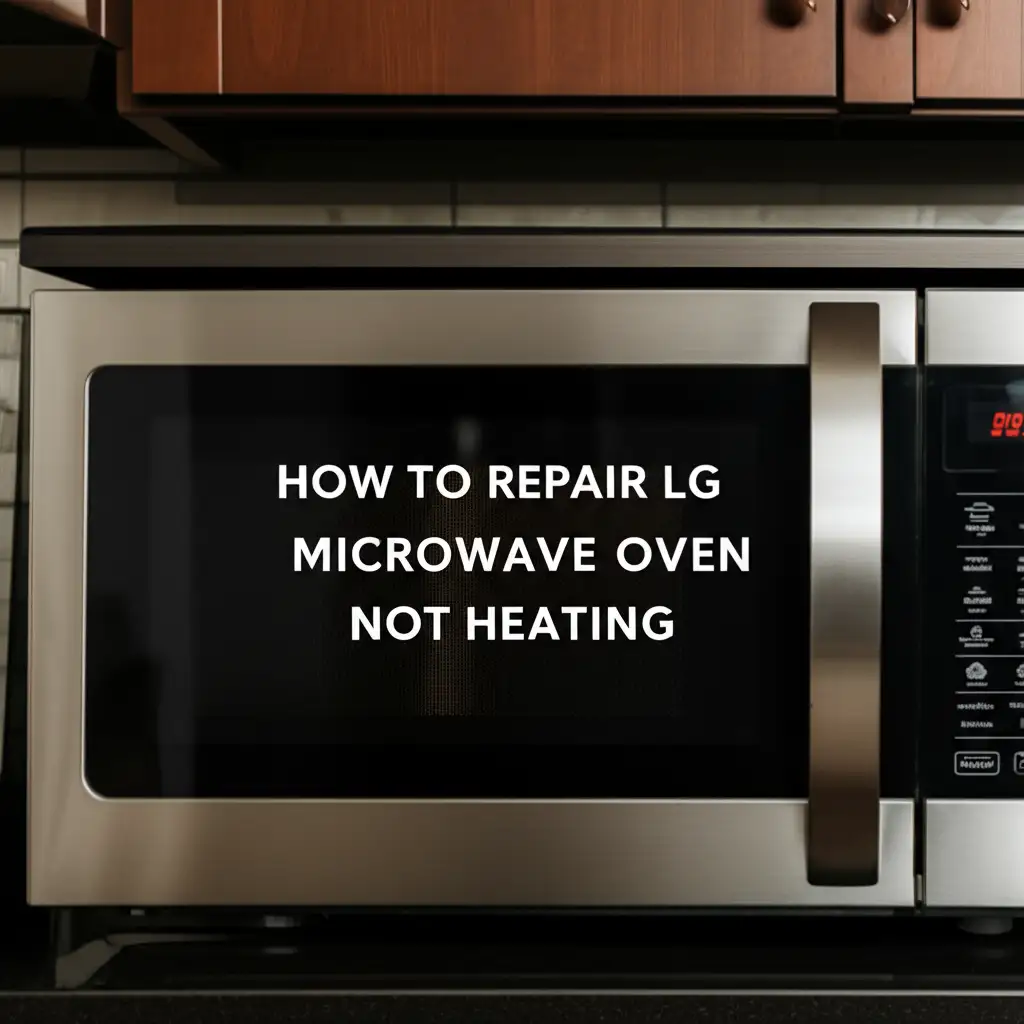· Todd Martin · Home Appliances · 15 min read
How Much Energy Does Electric Dryer Use

How Much Energy Does an Electric Dryer Use? A Detailed Guide
Tackling laundry day can often feel like a never-ending cycle, especially when thinking about your energy bill. Many of us wonder, “How much energy does electric dryer use?” Electric dryers are common in homes, offering convenience and efficiency in drying clothes. However, they are also one of the most significant energy consumers among household appliances. Understanding their energy use is key to managing your home’s electricity costs and environmental impact.
This comprehensive guide will break down the typical energy consumption of electric dryers. We will look at the factors that influence their energy use, compare them to other drying methods, and provide actionable strategies to reduce your dryer’s electricity footprint. By the end, you will have a clear picture of your dryer’s energy habits and how to save money.
Takeaway
- Electric dryers are high energy users: They consume a significant amount of electricity, impacting your utility bills.
- Energy use varies: Factors like dryer wattage, load size, and maintenance affect consumption.
- Efficiency matters: Newer, Energy Star-rated models, especially heat pump dryers, use less energy.
- Small changes save big: Simple habits like cleaning the lint trap and using sensor drying reduce electricity use.
- Troubleshoot issues: A dryer that takes too long to dry often indicates an energy-wasting problem.
An electric dryer typically uses between 2,000 to 6,000 watts, translating to about 2 to 6 kilowatt-hours (kWh) per load. The actual energy consumed depends on the dryer’s model, its wattage, the load size, the clothes’ wetness, and the chosen drying cycle. Efficient models and proper usage can significantly lower these numbers.
Understanding Electric Dryer Energy Consumption
Electric dryers work by heating air and tumbling clothes. This process requires a lot of energy. Most standard electric dryers operate on a 240-volt circuit. They have heating elements that can draw between 2,000 and 6,000 watts of power. The power draw directly relates to the amount of electricity your dryer uses.
To understand your dryer’s energy use, you need to know about kilowatt-hours (kWh). A kilowatt-hour is a unit of energy equal to 1,000 watts operating for one hour. Your electricity bill lists charges in kWh. If your dryer uses 5,000 watts (5 kW) for one hour, it consumes 5 kWh of electricity. The longer your dryer runs, and the higher its wattage, the more kWh it will use.
Calculating the cost is straightforward. You multiply the kWh used by the cost per kWh on your electricity bill. For instance, if electricity costs $0.15 per kWh and your dryer uses 3 kWh per load, each load costs $0.45. Over a year, these small costs add up. Understanding this helps you see the financial impact of your dryer’s energy consumption. If you want to dive deeper into the financial aspects, you can learn more about how much does electric dryer cost to run.
Average Energy Use of Electric Dryers
The average electric dryer uses a significant amount of energy each year. Older models generally consume more electricity than newer ones. A typical electric dryer can use anywhere from 1,800 to 3,000 kWh per year, depending on how often it runs. This makes it one of the most energy-intensive appliances in many homes, often second only to heating and cooling systems.
For a single load of laundry, an electric dryer might use between 2 and 6 kWh. The exact amount varies greatly. Factors like the moisture content of the clothes and the chosen heat setting play a big role. A large load of very wet towels will demand more energy than a small load of lightweight shirts. The age and efficiency rating of your specific dryer also impact these numbers.
Energy Star-certified electric dryers are designed to be more efficient. They use about 20% less energy than conventional models. These dryers often feature advanced sensor drying technology, which turns off the dryer once clothes are dry. This prevents over-drying and unnecessary energy waste. Investing in an Energy Star dryer can lead to noticeable savings over its lifespan.
Factors Influencing Electric Dryer Energy Use
Several factors directly affect how much energy an electric dryer consumes. Understanding these can help you identify areas for improvement and reduce your electricity bill. From the type of dryer you own to your daily habits, each element plays a role in the total energy footprint.
Dryer Type and Technology
The design of your electric dryer significantly impacts its energy consumption. Traditional electric dryers use resistance heating elements to warm the air. This method is effective but can be energy-intensive because much of the heated air is expelled outside. Newer technologies offer more energy-efficient alternatives.
Heat pump dryers represent a major leap in efficiency. Instead of venting hot, moist air outside, they recycle it. They use a refrigerant system to extract moisture from the air, much like a refrigerator. This allows them to use significantly less energy, often 50% or more, compared to conventional electric dryers. They cost more initially but offer long-term energy savings. Energy Star ratings help identify the most efficient models on the market.
Load Size and Fabric Type
Overloading your dryer is a common mistake that increases energy use. A dryer needs space for air to circulate freely around clothes. When overloaded, clothes tumble less effectively, and the hot air cannot reach all items evenly. This leads to longer drying times and wasted energy. It is better to run two smaller, efficient loads than one large, inefficient one.
The type of fabric also influences drying time and energy. Heavy materials like denim and towels hold more water and require more heat and time to dry. Lighter fabrics like synthetics and thin cotton dry faster. Separating laundry by fabric type can make your drying cycles more efficient. You can dry similar items together to optimize heat and time settings.
Cycle Settings and Sensor Drying
Modern electric dryers come with various cycle settings. High heat settings dry clothes faster but use more energy. For most loads, a medium or even low heat setting is sufficient and saves energy. Using lower heat also protects your clothes from excessive wear and shrinkage.
Sensor drying is one of the best features for energy efficiency. Instead of relying on a timer, sensor dryers detect the moisture level in the clothes. They automatically shut off when the clothes are dry. This prevents over-drying, which not only wastes energy but can also damage fabrics. Always choose sensor dry options over timed dry whenever possible. If your dryer seems to take too long to dry, it might be an indication of an issue preventing the sensor from working correctly, which you can investigate further by understanding why does my electric dryer take so long to dry.
Dryer Venting and Maintenance
Proper dryer maintenance directly impacts energy efficiency. A clogged lint trap or blocked dryer vent makes your dryer work harder. Lint buildup restricts airflow, forcing the dryer to run longer to achieve the same drying results. This increased run time means higher energy consumption. Cleaning the lint trap before every load is a simple yet crucial step. You can get more information on how to keep your dryer clean by reading our article on how to clean your dryer.
The dryer vent system also needs regular attention. A blocked or kinked vent hose reduces airflow, trapping heat and moisture inside the dryer. This can make drying cycles significantly longer and less efficient. It also poses a fire hazard. Ensure your dryer vent is clear and properly installed. Regular professional cleaning of the vent duct can prevent blockages. Understanding why does an electric dryer need to be vented helps explain the importance of this system. It is also good to confirm that does an electric dryer vent have to go outside to ensure proper and safe operation.
Comparing Electric Dryers to Other Types
When considering laundry appliances, it is helpful to compare electric dryers to other options. Each type has different energy consumption patterns and environmental impacts. Knowing these differences can help you make informed decisions about your home’s energy use.
Gas dryers are a common alternative to electric models. They use natural gas or propane to heat the air, which can be cheaper than electricity in many regions. Gas dryers often heat up faster and may have slightly quicker drying times. However, their overall energy efficiency, when considering primary energy input, can be similar to electric models. The choice often comes down to utility costs in your area and existing hookups. For a detailed comparison, you can read our article on is gas or electric dryer more energy efficient.
The most energy-efficient drying method is air drying. Using a clothesline outdoors or a drying rack indoors consumes zero electricity. This method is ideal for delicate items and can significantly reduce your household’s energy footprint. While not always practical for all laundry or climates, incorporating air drying for some items can lead to substantial savings. It also extends the life of your clothes by avoiding the wear and tear of machine drying.
Heat pump dryers, as mentioned earlier, are a modern, highly efficient type of electric dryer. They stand out because they do not expel heated air outside. Instead, they condense moisture from the air, making them much more energy-efficient than conventional electric dryers. They represent a good compromise between the convenience of a machine and the efficiency of air drying. While their upfront cost is higher, the energy savings often pay off over time.
Strategies to Reduce Electric Dryer Energy Consumption
Reducing your electric dryer’s energy consumption is easier than you might think. Small changes in habits and regular maintenance can lead to significant savings on your utility bills. These strategies not only cut costs but also extend the life of your appliance.
First, always ensure your laundry loads are spun well in the washing machine. The more water your washer removes, the less work your dryer has to do. Select the highest spin speed appropriate for your fabrics. This simple step can drastically reduce drying time and the energy needed. Wet clothes going into the dryer require much more heat and time to become fully dry.
Next, make it a habit to clean the lint filter before every load. A clean lint filter allows air to circulate freely. When lint builds up, it blocks airflow, making the dryer run longer and harder. This wastes energy and poses a fire hazard. Cleaning it takes only a few seconds but offers great benefits. For a comprehensive guide, refer to our article on how to clean your dryer.
Utilize sensor drying features if your dryer has them. These sensors detect when clothes are dry and automatically shut off the machine. This prevents over-drying, which wastes energy and can damage clothes. Avoid using timed dry settings unless absolutely necessary. If your dryer does not have a sensor, set a timer for shorter increments and check the clothes periodically.
Consider air drying certain items. Delicates, towels, or even a full load on a sunny day can be hung outdoors or on an indoor drying rack. This uses zero electricity. It is an excellent way to save energy and can be gentler on your clothes. Even drying one or two loads this way each week makes a difference over a year.
Finally, ensure your dryer vent system is clean and unobstructed. A blocked or kinked vent pipe forces your dryer to work inefficiently. This leads to longer drying times and increased energy use. Periodically check the vent hose for kinks and have the vent duct cleaned annually by a professional. If you find that why does my electric dryer take so long to dry, a clogged vent is often a primary culprit.
When Your Electric Dryer Uses Too Much Energy (Troubleshooting)
Sometimes, your electric dryer might start consuming more energy than usual without a change in your habits. This often indicates a problem with the appliance itself. Recognizing these signs and knowing when to troubleshoot can save you money and prevent larger issues.
A key sign of inefficient energy use is when your clothes take much longer to dry than they used to. If a load that once took 45 minutes now takes 90 minutes, something is wrong. This extended drying time means the dryer runs for longer periods, using more electricity. Common causes include a clogged lint filter or a blocked dryer vent, which restrict airflow. For more specific issues, you might want to read about why does my electric dryer take so long to dry.
Another indicator is if your dryer is running but not producing enough heat. An electric dryer needs heat to evaporate moisture effectively. If the heating element is failing or completely out, the dryer might tumble clothes endlessly without drying them. This wastes significant energy. You can check our article on why does my electric dryer not heat up for common reasons and solutions.
Frequent shutdowns or tripping breakers also suggest a problem. If your dryer repeatedly shuts off mid-cycle or causes your electrical breaker to trip, it is likely drawing too much current or overheating. This indicates an electrical fault or a serious airflow restriction. Continuing to use the dryer in this state is not only inefficient but also unsafe. Learn more about these issues by checking why does my electric dryer keep shutting off or why does my electric dryer keep tripping the breaker.
If you notice any of these signs, start by checking the lint trap and the dryer vent for blockages. Ensure the vent hose is not kinked or crushed. If these simple checks do not resolve the issue, it is time to consider professional repair. Ignoring these problems will only lead to higher energy bills and potentially more costly repairs down the line.
Future Trends in Electric Dryer Efficiency
The appliance industry continues to innovate, and electric dryers are no exception. Future trends focus on even greater energy efficiency, smart technology, and sustainable practices. These advancements aim to reduce household energy consumption further and provide more convenience.
Heat pump dryer technology is becoming more mainstream. These dryers are significantly more energy-efficient than traditional models. They operate by reusing hot air, which minimizes energy waste. As production scales up, their prices are becoming more competitive. This makes them a viable option for more households looking to reduce their energy footprint.
Smart features are also a growing trend. Newer electric dryers can connect to your home Wi-Fi network. This allows you to control them remotely using a smartphone app. You can start, stop, or monitor cycles from anywhere. Some smart dryers can even optimize drying cycles based on weather forecasts or real-time energy prices, helping you dry clothes during off-peak hours to save money.
Energy Star ratings will continue to evolve, setting higher standards for appliance efficiency. Manufacturers are pushed to develop technologies that meet these stricter guidelines. This includes better insulation, more precise sensor technology, and innovative heating methods. These developments ensure that new electric dryers consume less power than their predecessors.
Finally, sustainability is a key focus. Companies are exploring materials and manufacturing processes that reduce environmental impact. This includes using recycled components and designing appliances that are easier to repair and recycle at the end of their life. As consumers, choosing these more efficient and sustainable options helps contribute to a greener future.
FAQ Section
Q: Do electric dryers use a lot of electricity? A: Yes, electric dryers are one of the most energy-intensive appliances in a typical home. They often draw between 2,000 and 6,000 watts. This translates to a significant portion of your monthly electricity bill, especially if used frequently. Efficient models and proper usage can help reduce this consumption.
Q: How much does it cost to run an electric dryer per load? A: The cost per load varies based on your dryer’s wattage and your local electricity rates. On average, an electric dryer uses 2 to 6 kilowatt-hours (kWh) per load. If electricity costs $0.15 per kWh, a load could cost anywhere from $0.30 to $0.90.
Q: Is an Energy Star electric dryer worth it? A: Yes, an Energy Star-certified electric dryer is often worth the investment. These dryers use at least 20% less energy than conventional models. While they might have a higher upfront cost, the energy savings over their lifespan can recoup the initial expense and lead to long-term savings on your utility bills.
Q: Can a clogged dryer vent increase energy use? A: Absolutely. A clogged dryer vent severely restricts airflow. This traps heat and moisture inside the dryer, making it work much harder and run longer to dry clothes. This increased run time directly leads to higher energy consumption and poses a fire hazard. Regular cleaning is essential.
Q: What is the most energy-efficient way to dry clothes? A: The most energy-efficient way to dry clothes is air drying, either on an outdoor clothesline or an indoor drying rack. This method uses zero electricity. If machine drying is necessary, a heat pump electric dryer is the most energy-efficient appliance option available.
Q: How often should I clean my dryer’s lint trap? A: You should clean your dryer’s lint trap before every single load. This small step ensures maximum airflow, which helps your dryer operate efficiently and safely. A clean lint trap prevents longer drying times and reduces the risk of dryer fires.
Conclusion
Understanding how much energy an electric dryer uses is the first step toward significant energy savings in your home. We have seen that electric dryers are power-hungry appliances, but their consumption is not fixed. Factors like the dryer’s type, your usage habits, and proper maintenance all play a crucial role. From standard models to highly efficient heat pump dryers, each choice impacts your utility bill and environmental footprint.
By implementing simple strategies, you can reduce your electric dryer’s energy use. Cleaning the lint trap, optimizing load sizes, using sensor dry features, and ensuring proper venting are effective ways to save electricity. Troubleshooting issues like prolonged drying times or frequent shutdowns can also prevent unnecessary energy waste and costly repairs. I feel empowered knowing these tips. Take control of your home’s energy consumption. By making informed choices and adopting energy-saving habits, you can significantly reduce your electric dryer’s impact on your budget and the environment. Start implementing these tips today to enjoy lower energy bills and a more efficient laundry routine.





